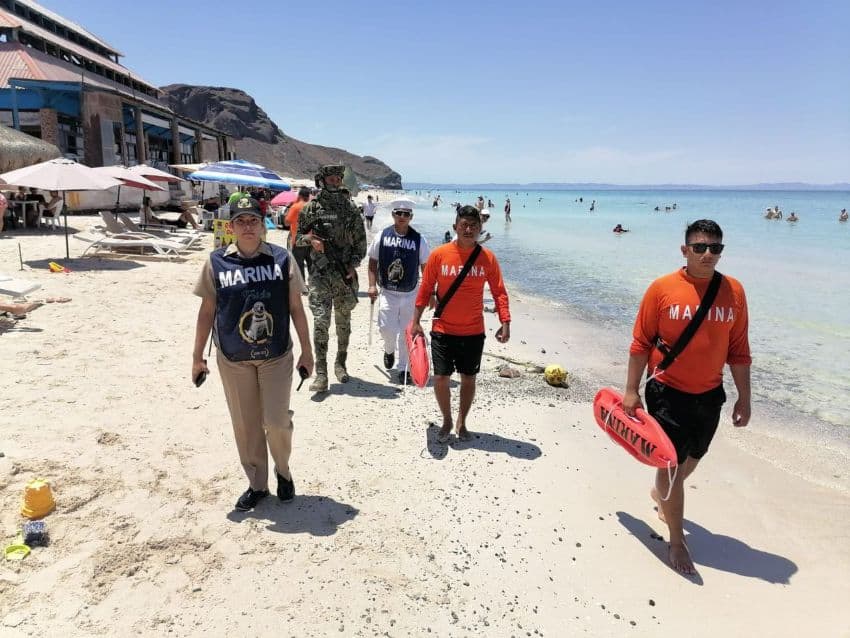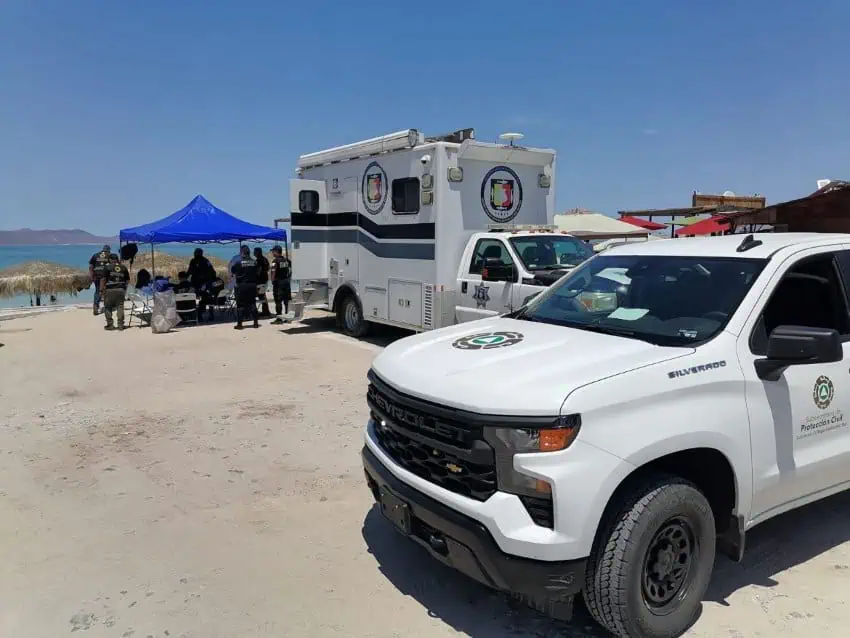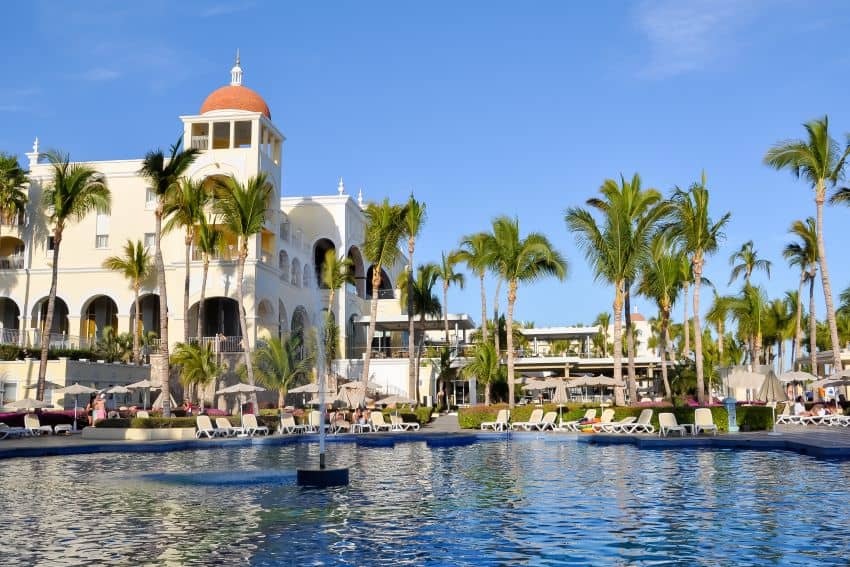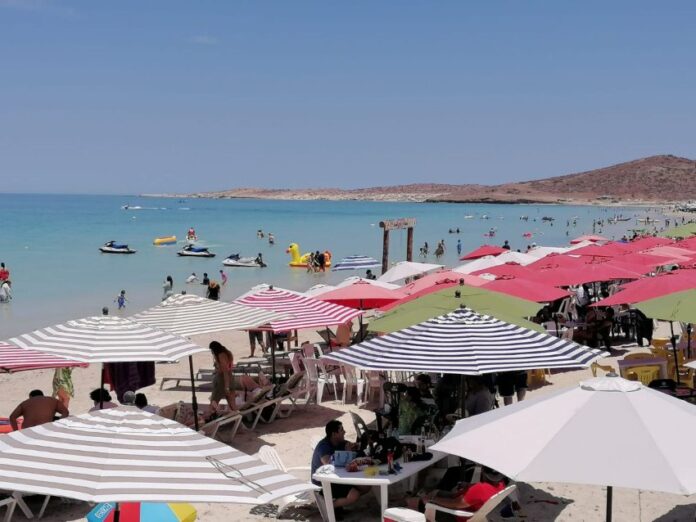The two biggest weeks of the year in terms of tourism in Baja California Sur are associated with holidays: Christmas and Semana Santa, the latter being Holy Week, which leads up to Easter Sunday.
Semana Santa is particularly notable for the high visitor numbers and elevated hotel occupancy figures but also because so many more Mexican tourists typically plan beach holidays during this period.

“During Holy Week, we see an increase in domestic tourism — although it doesn’t surpass international tourism. But we’ll be managing, for example, a 60-40 ratio: 60% international tourism, 40% domestic tourism,” Lilzi Orcí, Executive President of the Los Cabos Hotel Association, told Meganoticias.
“We have a lot of regional tourists, that is, from BCS, during this season. They also come from Mexico City, Monterrey, Guadalajara — and some from the Bajío.”
How many people visit during Semana Santa?
In 2025, about 94,000 tourists were expected to check into statewide hotels during Holy Week, while many times that number were projected to enjoy regional beaches (113,000 in Los Cabos alone, according to official estimates). Naturally, having so many people visit during any given week puts additional pressure on regional authorities to ensure the beaches and water are clean and welcoming and that other signature attractions around the state are ready to handle more traffic than usual.
With that in mind, here’s a look at some of the planning and preparations this year and the expectations regarding visitation, hotel occupancy, and economic impact during one of, if not the, biggest week of the year (since final numbers have not yet been announced).
Safety and security measures

In Los Cabos, more than 1,700 personnel and 250 units were tasked with being part of Semana Santa Segura 2025, an initiative to ensure the safety of all those visiting during Holy Week. If that seems like a lot, consider the ground they had to cover: 65 beaches across 190 kilometers of coastline.
“There will be seven surveillance, security and first aid stations on highways; eight surveillance and first aid stations on beaches; and 36 agencies from the three levels of government, institutions and organizations from the public, private and social sectors, who will carry out coordinated work,” confirmed Francisco Cota Márquez, Municipal Director of Civil Protection of Los Cabos, per Tribuna de Mexico.
Making sure beaches and water were of optimal quality
Federal officials have asked the public this year for help keeping regional beaches clean, an ongoing issue due to the enormous quantities of trash often left behind. Last year, Los Cabos cleaned up more than 70 tons of trash left on area beaches during Semana Santa.
To ensure optimal sanitary conditions at local beaches for the influx of visitors this year, the Federal Commission for Protection against Health Risks (COEPRIS) tested the water at 39 regional beaches — those expecting the highest turnouts, naturally — for any bacterial contamination.
Fortunately, all those tested got a clean bill of health. The World Health Organization has established acceptable levels of enterococci, a bacteria whose relative presence is used to gauge overall water quality. Samples of sandy stretches from BCS beaches were also tested at regional laboratories and came back 20 times cleaner than was necessary to receive the “optimal” designation.
Playa Balandra will keep the same hours during Semana Santa
Of all the regional beaches in BCS, none is as beautiful or difficult to visit as Playa Balandra in La Paz. That’s because it’s now a protected area, and access is limited to 450 visitors during two daily periods (8 am to noon or 1 pm to 5 pm). Locals get in free, but visitors must purchase an electronic bracelet for 120 pesos.
Those hours and rules remained the same during Semana Santa, but as always, all the other beautiful beaches in the La Paz municipality were free and offered unlimited access.
How hotel occupancy spikes during Semana Santa
The occupancy level at the state’s 499 hotels will vary this year. In Los Cabos, for example, it was expected to hit 90%, with robust rates too.

“We are expecting a rate of US $515, which provides an excellent economic impact during this season,” Orcí said the week before Semana Santa. “The total number of rooms we have as a Hotel Association is 19,500, and our tourist density per room is 2.4, which still gives us a projection of how many tourists we will receive per day during this holiday period. The rate we are managing is $20 higher than last year.”
But as good as 90% sounds, it’s not as good as the 95% occupancy expected in Mulegé. Other regional destinations were anticipating numbers that weren’t quite that robust but expected them to be above, often well above, the average hotel occupancy in Mexico (60%). Comondu, for instance, was booked this year at 84% of hotel capacity, Loreto at 75% and La Paz at 65%.
The statewide number is likely closer to the Los Cabos figure since the southernmost municipality hosts easily the most hotel rooms: 19,500 of 28,651 in BCS, or 68%.
Celebrating a memorable moment in regional history

The “Log from the Sea of Cortez” by John Steinbeck is perhaps the best-known book ever written about the Baja California Peninsula, even though it’s only an abridged version of an earlier work: “Sea of Cortez: A Leisurely Journal of Travel and Research.”
“The Log” keeps Steinbeck’s narrative observations but jettisons most of the notes on specimen collecting and marine biology that were the prime motivators of the six-week expedition undertaken by Steinbeck and his friend Ed Ricketts — the inspiration for the character Doc in Cannery Row — aboard the Western Flyer in 1940.
Steinbeck and Ricketts have long since passed away, but amazingly, the Western Flyer, a 77-foot purse seiner, is still around. She arrived in La Paz on Sunday, April 13, the start of Semana Santa, and was displayed to the public at the Muelle Fiscal as part of festivities celebrating the 85th anniversary of the legendary voyage.
Chris Sands is the Cabo San Lucas local expert for the USA Today travel website 10 Best, writer of Fodor’s Los Cabos travel guidebook and a contributor to numerous websites and publications, including Tasting Table, Marriott Bonvoy Traveler, Forbes Travel Guide, Porthole Cruise, Cabo Living and Mexico News Daily. His specialty is travel-related content and lifestyle features focused on food, wine and golf.
